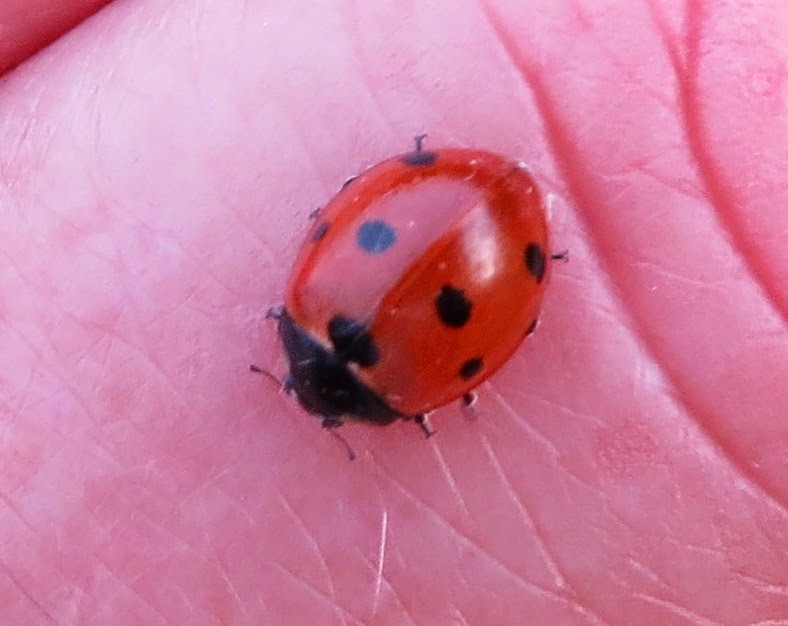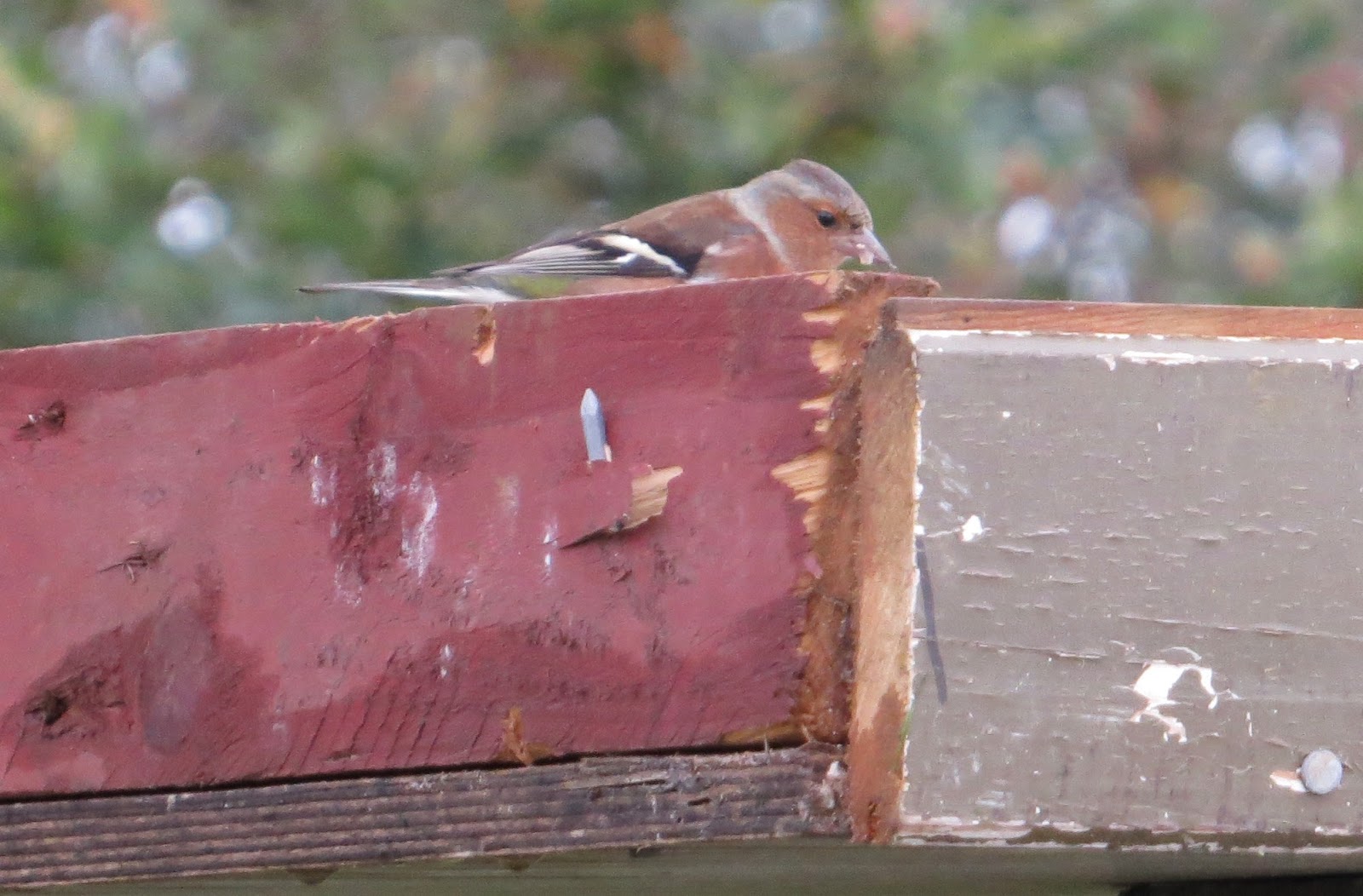With overnight temperatures 'STILL'
remaining unseasonably high, Moths STILL continue to be caught! The
average nightly catch over the past week has been 68 Insects of 18
species from 4 traps, with the following showing some of the success
rate.
New to the 2014 List
SATELLITE
and
the diminutive migrant
SMALL MOTTLED WILLOW
A regular and fairly common visitor to our shores,
but have any 'numbers' arrived so far this year?
While we thought it best to put 'Firsts' (of the year) things First,
we have caught a Moth, in the last couple of days, which outshines them all.
I am told that this 'tiny' migrant Moth can originate from as far south
as the North Africa and, as distance increased and by definition
temperature rises, so does the darkness of colouration.
To quote Skinner
Variation. Wild-caught specimens usually resemble one of the two forms figured;
however, in captivity temperature experiments with the Pupae will
produce a wider range of dark brown and bright crimson colour forms.
On the strength of that it is assumed that our specimen either comes
from the Sahara Desert or Chiefies Laboratory next door?

FEATHERED THORN
SPRUCE CARPET
and still a
SNOUT
about.
SATELLITE
and
the diminutive migrant
SMALL MOTTLED WILLOW
A regular and fairly common visitor to our shores,
but have any 'numbers' arrived so far this year?
While we thought it best to put 'Firsts' (of the year) things First,
we have caught a Moth, in the last couple of days, which outshines them all.
While these two 'colour varients' of
VESTAL
clearly indicate how different shades can be in this particular species, the
'Show Stealer'
surely has to be this one.VESTAL
clearly indicate how different shades can be in this particular species, the
'Show Stealer'
I am told that this 'tiny' migrant Moth can originate from as far south
as the North Africa and, as distance increased and by definition
temperature rises, so does the darkness of colouration.
To quote Skinner
Variation. Wild-caught specimens usually resemble one of the two forms figured;
however, in captivity temperature experiments with the Pupae will
produce a wider range of dark brown and bright crimson colour forms.
On the strength of that it is assumed that our specimen either comes
from the Sahara Desert or Chiefies Laboratory next door?

FEATHERED THORN
SPRUCE CARPET
and still a
SNOUT
about.
ROBBERFLY Sp
was all from the traps, while
just an example of numbers that took less than 5 minutes to collect
from the front of Slight Return II.
HARLEQUIN
and far smaller numbers of
7-SPOT LADYBIRD
During our daily visits to the Pond it has been found that the
Bird Table
hasn't exactly been overwhelmed with veracious feeders.
However, just yesterday we had 2 new species not seen there before.
Our 'fifth' species was an unexpected
REED BUNTING
followed a few minutes later by a long overdue
CHAFFINCH
MEADOW PIPIT
still remain but, like 'everything' else numbers are becoming much reduced.
LONG-TAILED TIT
meanwhile have not plucked up the courage to climb onboard,
but more encouraging were the
GOLDFINCH
feeding on Redshank and 'taking' water from, and bathing in,
the boggy patch recently cleared of branches and bows.
COMMON FROG
this one alive and kicking
was caught and placed for the photo call.
Regular readers may remember this
PUFFBALL
Lycoperdon lividum
was all from the traps, while
From the 'plague', which were mainly
HARLEQUIN LADYBIRDSjust an example of numbers that took less than 5 minutes to collect
from the front of Slight Return II.
HARLEQUIN
and far smaller numbers of
7-SPOT LADYBIRD
During our daily visits to the Pond it has been found that the
Bird Table
hasn't exactly been overwhelmed with veracious feeders.
However, just yesterday we had 2 new species not seen there before.
Our 'fifth' species was an unexpected
REED BUNTING
followed a few minutes later by a long overdue
CHAFFINCH
MEADOW PIPIT
still remain but, like 'everything' else numbers are becoming much reduced.
LONG-TAILED TIT
meanwhile have not plucked up the courage to climb onboard,
but more encouraging were the
GOLDFINCH
feeding on Redshank and 'taking' water from, and bathing in,
the boggy patch recently cleared of branches and bows.
COMMON FROG
this one alive and kicking
was caught and placed for the photo call.
BLACK NIGHTSHADE
now starting to 'blanket' the grassy areas around the Pond.Regular readers may remember this
PUFFBALL
Lycoperdon lividum
featured a few days ago, well its progress has been monitored over
that period and this morning was found to be what might be described as
that period and this morning was found to be what might be described as
simply thought this esthetically pleasing if nothing else.
| Entry | Pageviews |
|---|---|
United Kingdom
|
537
|
United States
|
219
|
Germany
|
164
|
Russia
|
49
|
Poland
|
25
|
France
|
22
|
Ukraine
|
22
|
China
|
18
|
Sweden
|
13
|
Australia
|
11
|
.JPG)
%2B.JPG)
.JPG)
.JPG)
.JPG)
.JPG)
.JPG)

.JPG)














.JPG)
.JPG)

%2B.JPG)
%2B.JPG)
